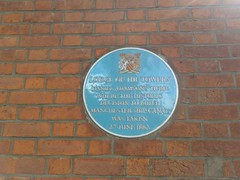Manchester Ship Canal
Commemorated on 2 plaques
Lodge of 'The Towers' Daniel Adamson's home where the historic decision to build Manchester Ship Canal was taken 27 June 1882.
Shirley Institute Wilmslow Road, Didsbury, Manchester, United Kingdom where it founded (1882)
Opened 21 May 1894 by Queen Victoria Manchester Ship Canal Engineer Sir Edward Leader Williams Centenary Year 1994
Trafford Road, Salford, United Kingdom where it was


